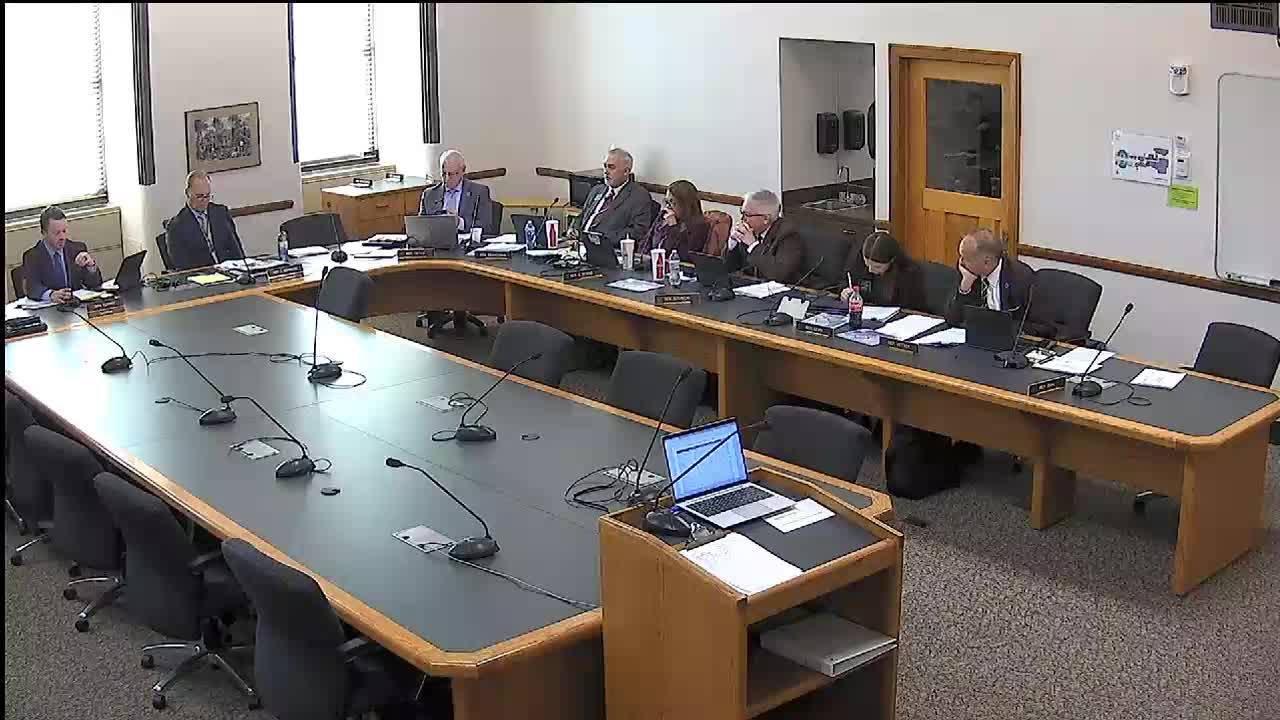PERS briefs committee on retirement plans and upcoming health‑plan re‑bid; DC plan enrollment grows to ~2,600
October 30, 2025 | Legislative, North Dakota

This article was created by AI summarizing key points discussed. AI makes mistakes, so for full details and context, please refer to the video of the full meeting. Please report any errors so we can fix them. Report an error »

The Public Employees Retirement System (PERS) briefed the Employee Benefits Program Committee on Oct. 7 about multiple statutory and administrative changes enacted in recent legislative sessions and about PERS’s companion group health insurance contracting plans.
Executive Director Rebecca Fricke said PERS administers multiple retirement plans for roughly 61,000 members and paid about $239 million to in‑state retirees in calendar year 2024. PERS implemented a new 2025 defined‑contribution (DC) tier enacted by House Bill 1040 that allows a mandatory lower baseline contribution but permits employees to elect up to an additional 3% in salary deferral; employers must match elected amounts. The election is irrevocable and must be made within a short statutory window; PERS staff noted limited exceptions tied to participation in deferred compensation.
PERS opened a limited transfer window so eligible state employees with 5 years’ service or less could transfer present value from the legacy main plan to the new DC tier; 144 members made that election. The legislature appropriated a pool of funds to pay the incentive installments tied to those transfers; PERS said the first incentive payment is scheduled for Jan. 2026 and that appropriations cover the first two payments; agencies and OMB will address the final installment in the next biennium budget process.
Derek Holbein, PERS chief operating and financial officer, reported DC plan enrollment growth since Jan. 1, 2025: about 2,600 participants and roughly $36 million in assets as of Sept. 30, 2025. He said participant education (live and on‑demand webinars and one‑on‑one counseling) has been widely used; as of late September roughly 74% of eligible participants had made required elections and another cohort remained in the 30‑day election window.
On health insurance, Fricke said PERS last solicited bids for bundled medical and pharmacy coverage for the 2021–23 biennium; Sanford Health Plan currently holds the contract. PERS plans to re‑bid the contract for the 2027–29 biennium with an anticipated release of procurement materials in mid‑2026 and a decision before the next legislative session. Fricke said the PERS board may consider bundled and unbundled, fully insured and self‑insured options when evaluating bids.
Fricke also listed recent session bills affecting PERS, noting that most are implemented or underway. One pending change—House Bill 1216, which lowers prescription out‑of‑pocket maximums for PERS enrollees—takes effect Jan. 1, 2026; PERS reported an estimated premium impact of roughly 0.62% for the grandfathered PPO plan. Because the bill was not funded, PERS plans to use reserves in the current biennium to cover the 18‑month cost; future premiums will reflect the change when the board and future solicitations price that benefit into contract bids.
PERS staff said they will return with more detailed follow‑up on reserve impacts, the DC plan’s ongoing enrollment and investment results, and health‑plan bid timing as required by the committee during the interim.
Executive Director Rebecca Fricke said PERS administers multiple retirement plans for roughly 61,000 members and paid about $239 million to in‑state retirees in calendar year 2024. PERS implemented a new 2025 defined‑contribution (DC) tier enacted by House Bill 1040 that allows a mandatory lower baseline contribution but permits employees to elect up to an additional 3% in salary deferral; employers must match elected amounts. The election is irrevocable and must be made within a short statutory window; PERS staff noted limited exceptions tied to participation in deferred compensation.
PERS opened a limited transfer window so eligible state employees with 5 years’ service or less could transfer present value from the legacy main plan to the new DC tier; 144 members made that election. The legislature appropriated a pool of funds to pay the incentive installments tied to those transfers; PERS said the first incentive payment is scheduled for Jan. 2026 and that appropriations cover the first two payments; agencies and OMB will address the final installment in the next biennium budget process.
Derek Holbein, PERS chief operating and financial officer, reported DC plan enrollment growth since Jan. 1, 2025: about 2,600 participants and roughly $36 million in assets as of Sept. 30, 2025. He said participant education (live and on‑demand webinars and one‑on‑one counseling) has been widely used; as of late September roughly 74% of eligible participants had made required elections and another cohort remained in the 30‑day election window.
On health insurance, Fricke said PERS last solicited bids for bundled medical and pharmacy coverage for the 2021–23 biennium; Sanford Health Plan currently holds the contract. PERS plans to re‑bid the contract for the 2027–29 biennium with an anticipated release of procurement materials in mid‑2026 and a decision before the next legislative session. Fricke said the PERS board may consider bundled and unbundled, fully insured and self‑insured options when evaluating bids.
Fricke also listed recent session bills affecting PERS, noting that most are implemented or underway. One pending change—House Bill 1216, which lowers prescription out‑of‑pocket maximums for PERS enrollees—takes effect Jan. 1, 2026; PERS reported an estimated premium impact of roughly 0.62% for the grandfathered PPO plan. Because the bill was not funded, PERS plans to use reserves in the current biennium to cover the 18‑month cost; future premiums will reflect the change when the board and future solicitations price that benefit into contract bids.
PERS staff said they will return with more detailed follow‑up on reserve impacts, the DC plan’s ongoing enrollment and investment results, and health‑plan bid timing as required by the committee during the interim.
View full meeting
This article is based on a recent meeting—watch the full video and explore the complete transcript for deeper insights into the discussion.
View full meeting
